The tomato growing season is in full swing. Emma Rawlings offers some advice on keeping your crop growing well and what to look out for.

Watering tomatoes
If growing tomatoes in pots or growing bags in a greenhouse you will quickly realise that they may need to be watered at least once a day, sometimes twice on very hot days. If you can rig up a watering system this will make your life a lot easier. There are many options including little drippers which are attached to small pipes that then attach to a hosepipe. This can lead to a waterbutt or tap and timers can be added so you don’t even need to turn it on yourself.
Self-watering pots are also a good investment. They have a reservoir of water beneath the plants and a wick that connects the compost to the water. The water just needs topping up occasionally, but it keeps the compost evenly moist.
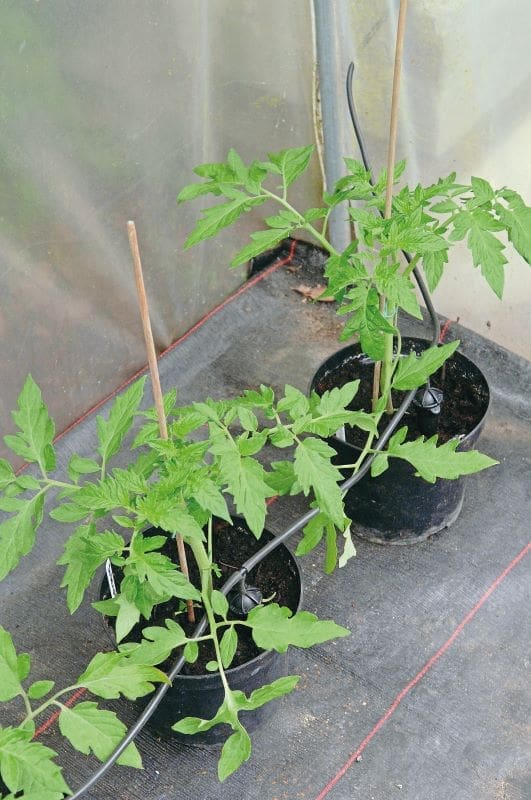
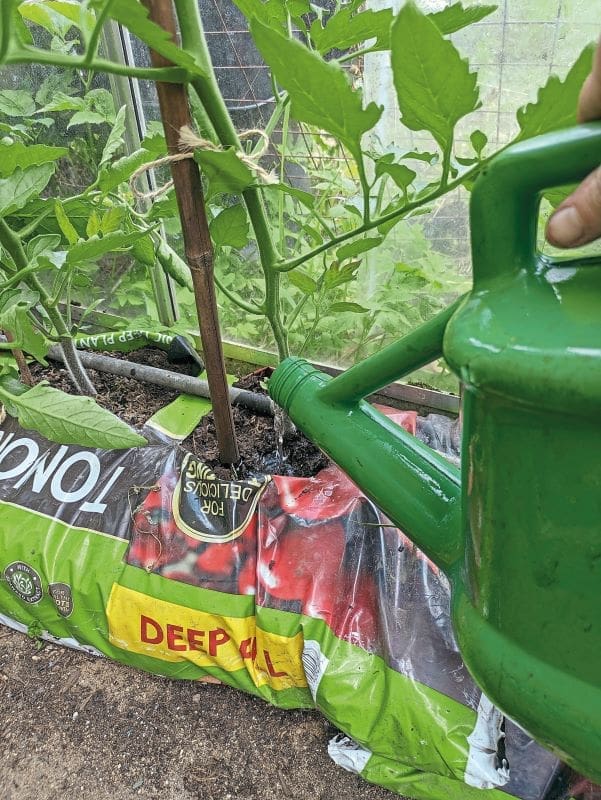
Feeding tomatoes
Once the tomato plants show the first sign of flowers then you can start giving a liquid feed once a week with a proprietary tomato feed.
Removing sideshoots from tomatoes
Cordon varieties of tomatoes are grown as a single main stem. The seed packet usually informs you whether to grow like this or you can look the variety up online. To keep them growing as a single stem you need to pinch out the sideshoots regularly. The sideshoots are between the main stem and a leaf. Ideally catch the sideshoot when they are this small (see image 1) or even smaller and simply hold between finger and thumb and peel away from the joint.
It doesn’t matter how good you are at checking for sideshoots you always miss a few and they can get much larger like this (see image 2). At this size you can still snap them off.
Occasionally you miss a sideshoot and it gets very big. Sometimes you can miss ones growing from near the base of the plant. When you spot these you can still snap them off but if very large you could use secateurs. (See image 3.)
Some varieties will produce what appears to be a double leader. In fact, the stem on the right is actually the leader often carrying a truss of flowers and the one on the left is really a sideshoot. As the stems are quite merged, secateurs can be used to snip off this left-hand shoot and the leader gently tied slightly more upright to the cane. (See image 4.)
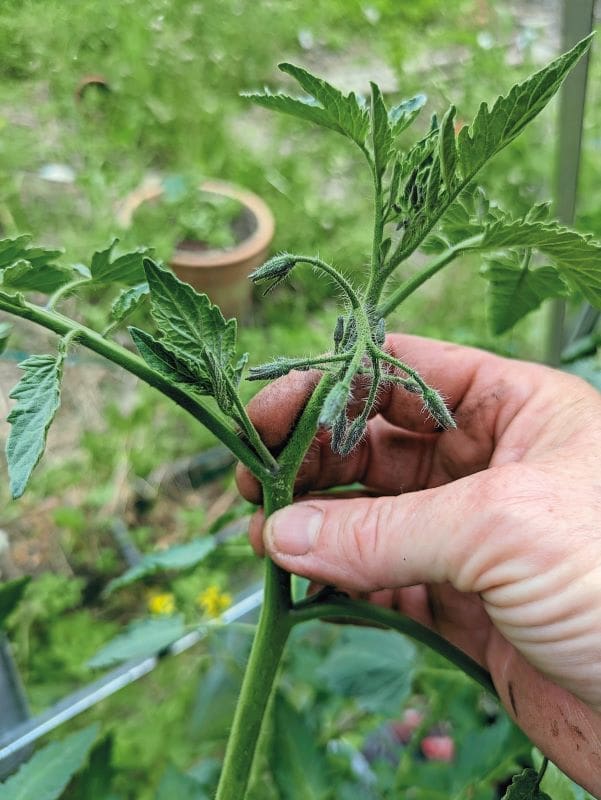
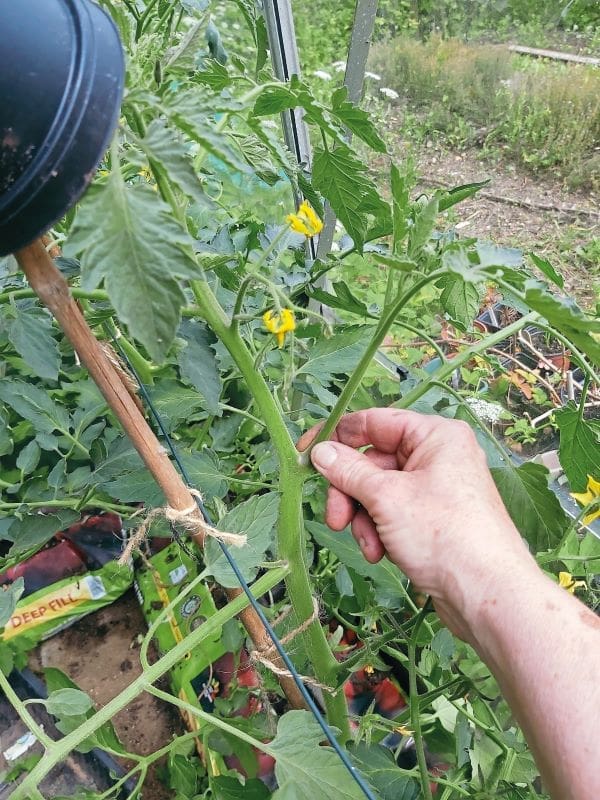

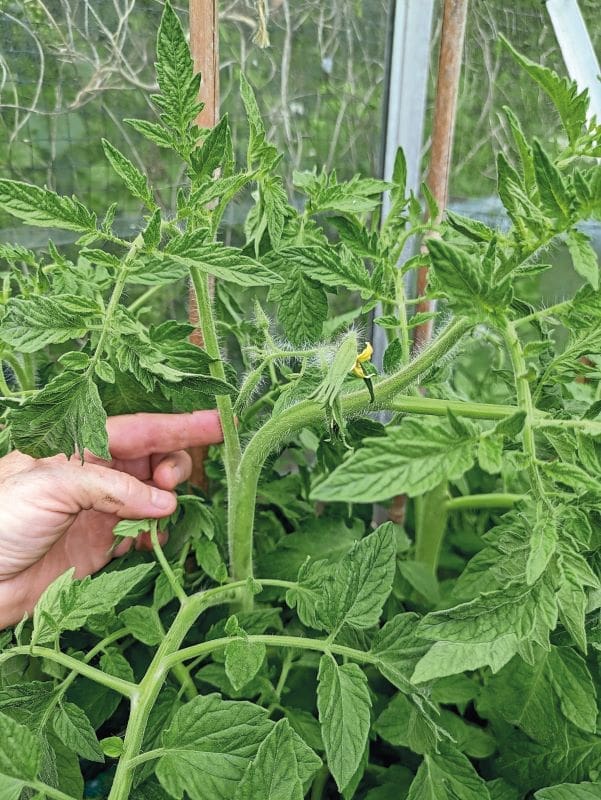
Fruit issues
If the fruits split it can indicate watering or temperature fluctuations. The skins of some tomato varieties are quite thin and are sensitive to sudden surges in water at the roots and this may causing splitting. If caught early enough they are fine to pick and eat.
Blossom end rot causes the base of fruits to blacken and look sunken. It is caused by a lack of calcium but is not normally due to a deficiency of calcium, more a watering issue. High temperatures or lack of water at the roots for a short time can interrupt the flow of water to the fruit and calcium delivery to the cells. Plants grown in growing bags with restricted root runs are more prone to this too.

Bush tomatoes
There are fewer bush varieties around but popular ones at the moment are the compact varieties that can be grown in a pot on a windowsill or some are suitable for growing in hanging baskets like ‘Tumbling Tom’. After planting you let them do their thing. No sideshoot removal is necessary.

Leaf problems
Later in the season the leaves at the base of the tomato plants may turn yellow and it doesn’t hurt to just remove these as it helps with airflow around the plants. If the leaves are still green then leave them on.
Yellow leaves further up the plant, like the one shown, can indicate a nutrient deficiency. Brown patches between leaf veins may suggest magnesium deficiency and not something to be worried about late in the season, especially on older leaves. You could apply some Epsom salts to help with this.
If the green leaves start to curl up and otherwise look a healthy green, this is likely due to low humidity or fluctuations in temperature between night and day and again, is not something to be unduly worried about.





